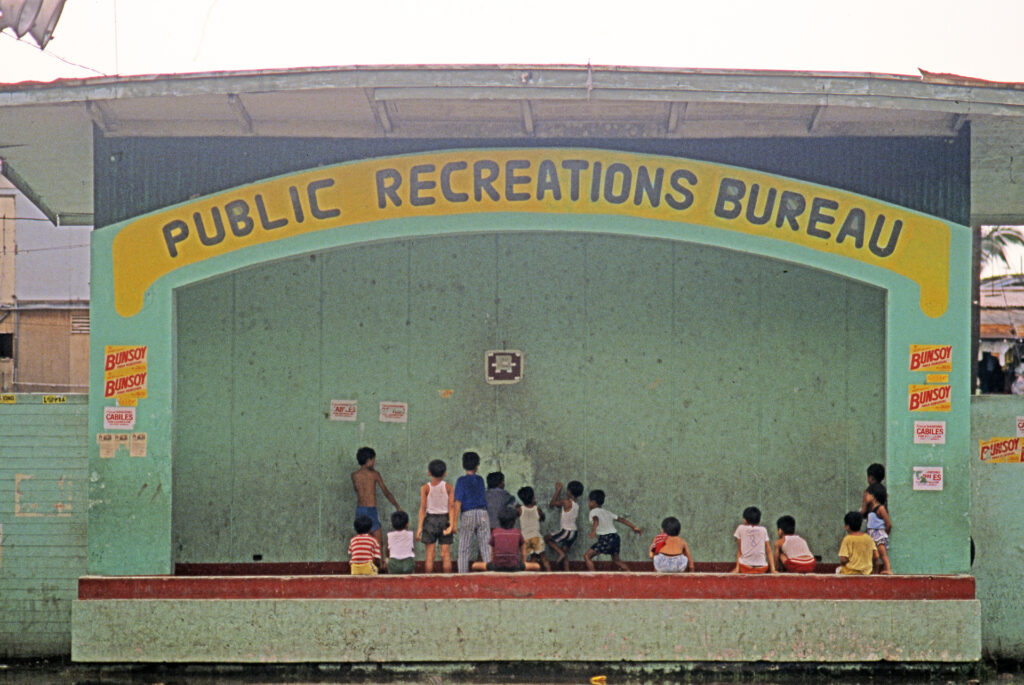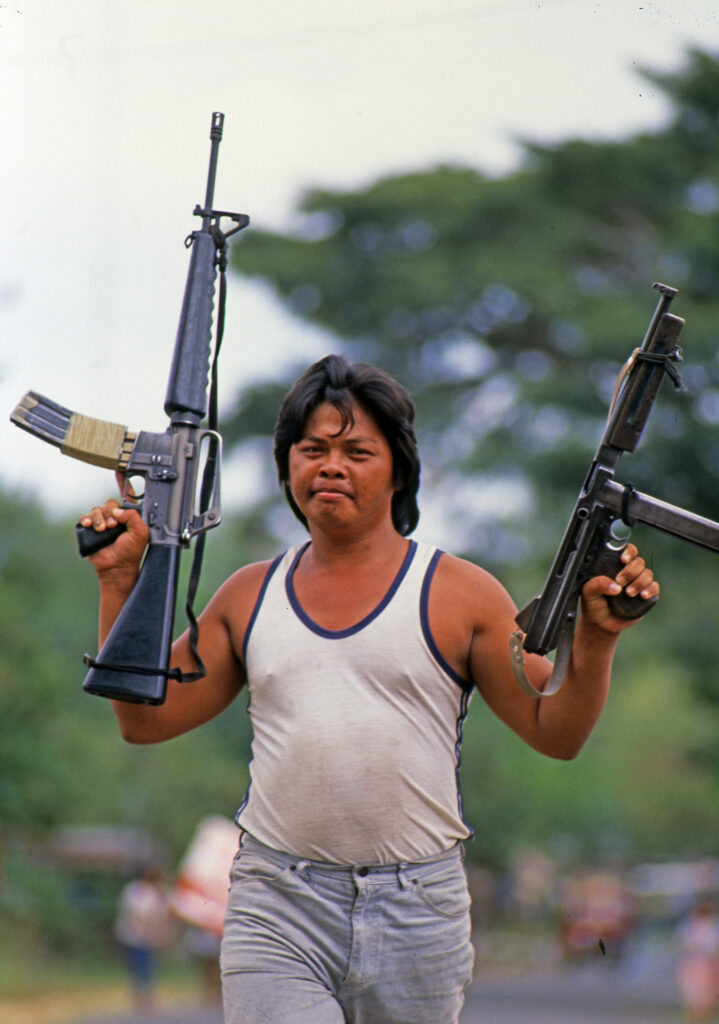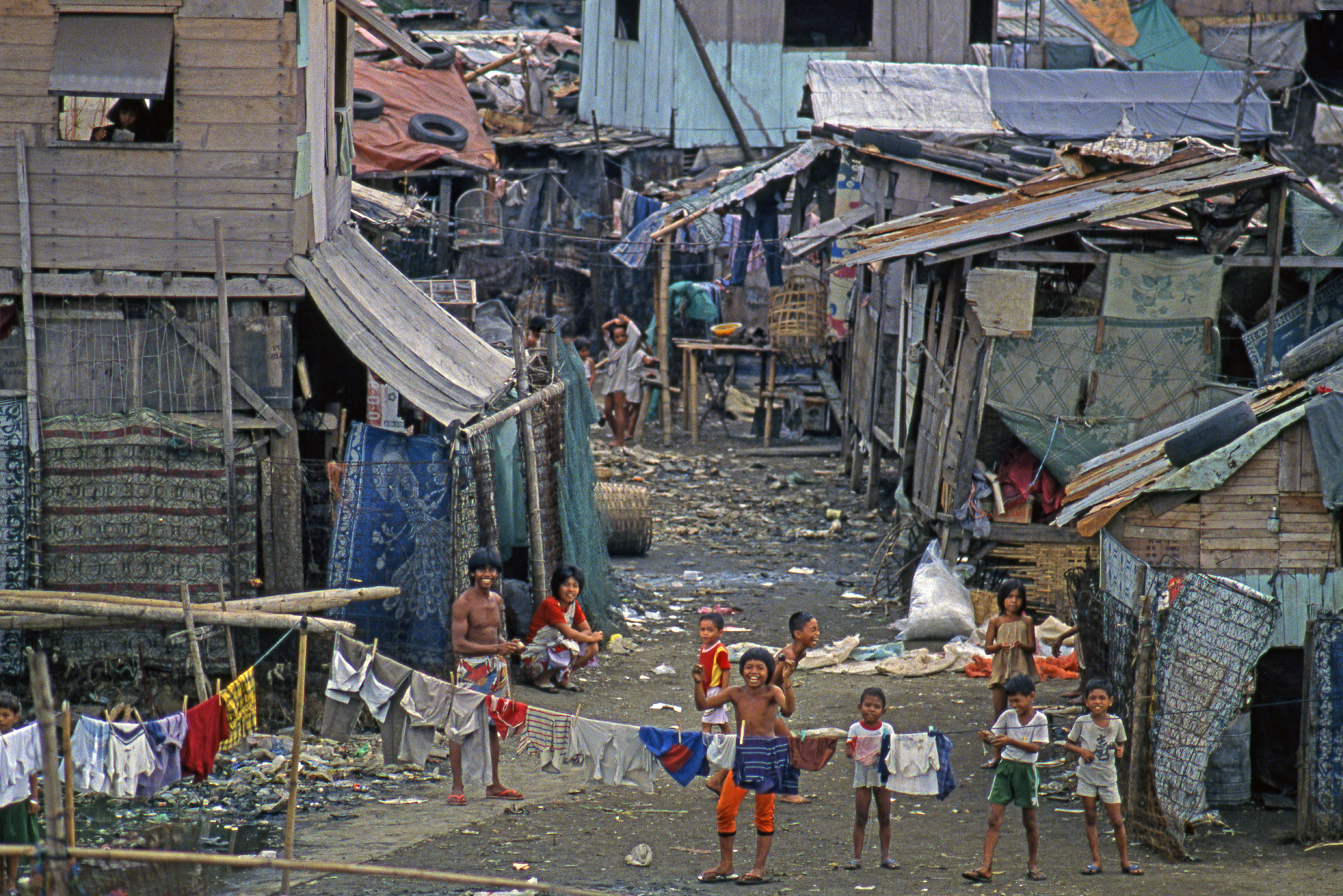Alsa Masa
Preseident Durantes program of eliminating drugs through sanctioning dead squads, has it’s roots in the notion of a program called “The Peoples’ Watch” or “Masa Masid” which would allow local community people to be involved. This program has it’s roots in a vigilante group operating around Davoa city in the 1980’s. I traveled extensively in the Phillipines during this time. Here are some fieldnotes.
In Mindanao, in the southern Philippines, child members of the anti-communist Alsa Masa paramilitary vigilante forces line up in front of a movie theater carrying real M-16 automatic weapons and wearing Rambo hats, to watch a “Rambo” film. One night I watch them at a roadblock in the middle of night, stopping cars to determine who is a communist and who is not. They kick a severed head around on the road. Indescribable violence is regularly inflicted on anyone who disagrees with these children, who vehemently believe that God and democracy are on their side. The Coca Cola Company buys them their road block signs.
The man in charge in Colonel Calida, who wears a gold Rolex watch and sits at a desk in front of Rambo posters.
These vigilantes are young, poor, and vulnerable, and act on the premise that if you’re not with them, you must be a communist. Twelve-year-old boys have butchered alleged communists. In one case a 60-year-old farmer was stretched spread-eagle then chopped to death while the army looked on. He had stolen a pair of jeans. These people admire and aspire to their interpretation of the American ideal. But if the democracy clock is at noon for America, it is at 9 a.m. for the Philippines.
The model they attempt to emulate is from another time. There are cultural and historical differences they can’t share, or be expected to understand. The Philippines did not acquire human freedoms as their birthright, like America. They are desperately fighting for them now. Fighting old pains and tensions of poverty, private and public rights, family dynasty power structures that sanction certain forms of corruption, justice systems that deliberate unimpaired by checks and balances, and authority that prevails on patronizing whims under the guise of a constitution. The “Rambo” image is easily grasped by the Alsa Masa, and no doubt by the righteous ‘death squads operating today. Rambo is outdated by not his blatant modus operandi – freedom at all costs – which confirms their right to be violent, in the midst of instability. “Rambo” is mythologized through adolescent mentality and desperate people struggling for identity on personal, religious, and political fronts which often become matters of survival, with guns. His style is perfect for any vigilante. Being in this situation is obvious and predictable; on another, it is absurd. I am led to wonder if I am in a movie or just watching it. Rambo is not only a symbol, but also a useful metaphor for discussing the motives and influence of external intervention in the Philippines. This place is like a window to view the dynamics of international seduction and the influences that project and distort perceptions of right wrong. In the process, people are denied their own creative and original ways of making mistakes and changes that reflect their culture and history. It leads one to ask if American interests are more a part of the problem than the solution, and to what extent the American government will accept anything, other than communism?
Davao City, 1987
Bowen island, 2022


